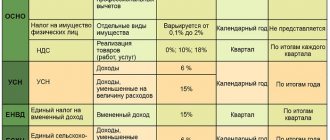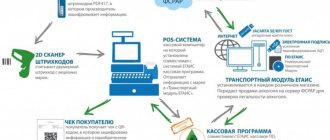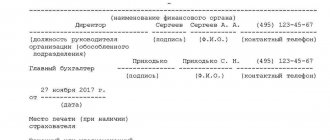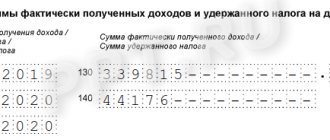Due to changes in the VAT rate, the risk zone includes transactions whose obligations as of January 1, 2020 will not be fulfilled or will not be fully fulfilled. In addition to situations where the receipt of money and the shipment of goods (performance of work, provision of services) occur in different years, difficulties may arise with those contracts that were signed in the current year, but will be fulfilled in full or in part only in the next year.
Regulations:
- Art. 154, 164, 167, 168, 170, 171, 172 Tax Code of the Russian Federation;
- Art. 452 Civil Code of the Russian Federation;
- Federal Law dated August 3, 2018 No. 303-FZ;
- Ruling of the Supreme Court of the Russian Federation dated November 23, 2017 No. 308-ES17-9467 in case No. A32-4803/2015;
- letters of the Ministry of Finance dated 08/06/2018 No. 03-07-05/55290, dated 08/28/2018 No. 24-03-07/61247, dated 09/18/2018 No. 03-07-11/66752;
- letter of the Federal Tax Service of Russia dated September 10, 2018 No. SD-4-3/17537.
Shipment 18, money 20
When the sale took place in the current year, and the money arrived in the next year, the tax base will be finally determined on the day of shipment and should not be adjusted further on the date of payment (clause 1, clause 1, article 167 of the Tax Code of the Russian Federation). Such transactions are subject to VAT at a rate of 18% and will not cause any difficulties to the accountant due to changes in the rate.
However, if not all goods (work, services) provided for in the contract have been shipped this year, the VAT rate will need to be determined for each shipment separately, based on the date of sale. Consequently, for goods (work, services) shipped after 01/01/2019, a new tax rate will be applied (clause 4 of article 5 of the Federal Law of 08/03/2018 No. 303-FZ). Let's say the parties entered into a supply agreement providing for the shipment of the first batch of goods in November 2020, and the second in March 2020. Then, when drawing up documents for the first shipment, you will need to indicate the VAT rate of 18%, and for the second - 20%. The tax is charged on the cost of goods actually shipped in each shipment (clause 1 of Article 154 and clause 1 of clause 1 of Article 167 of the Tax Code of the Russian Federation).
Ask your counterparty to provide a discount
The increase in VAT from 2020 is a good reason to ask the supplier for a discount this year for ordering a larger volume of goods, for a planned shipment within this year, etc. The supplier will immediately issue an invoice with the final price, which will take into account the discount. The buyer accepts the goods for accounting at the cost recorded in the original documents and invoices and claims VAT for deduction. All these operations will be carried out and carried out in 2020, then during the transition period you will not have problems with changing the tax rate
Money 18, shipment 20
The situation with the calculation of VAT is much more complicated when the obligations of the parties are distributed between years in reverse order. If money for a product (work, service) was received in 2020, and shipment occurs only after 01/01/2019, the recipient of the money will have to calculate and pay VAT on it at the rate that is in effect on the date of receipt (clause 2, clause 1, article 167 and clause 4 of article 164 of the Tax Code of the Russian Federation, clause 4 of article 5 of Law No. 303-FZ). Therefore, the tax will be calculated at the rate of 18/118, and the tax amount determined in this way will be reflected in the invoice sent to the buyer (customer) and in the declaration. This means that the VAT determined at this rate will be transferred by the seller (performer) to the budget, and accepted for deduction by the buyer (customer).
In 2020, after shipment of goods (performance of work, provision of services), both parties will have to perform the reverse operation - deduct and restore advance VAT. And here we must remember that the amount that was calculated is accepted for deduction and restoration. Therefore, an increase in the rate at the time of shipment does not affect this part of the tax calculation operation. Since 303-FZ did not establish any special rules in this part, we are guided by the general rules: clause 8 of Art. 171, paragraph 3 of Art. 170 Tax Code of the Russian Federation.
Moreover, the procedure described above applies to both full and partial prepayment. If the agreement stipulates that only part of the money is transferred in 2018, and the rest after the new year, then money received in the current year will be taxed at a rate of 18/118, and those received after the holidays - at a rate of 20/ 120. And here it is important for the accountant to clearly separate the financial flows so that there is no confusion with the amounts of VAT that are restored and accepted for deduction - in all cases we are talking about calculated amounts, albeit at different rates.
XVI Kontur.Conference “Accounting Innovations 2018–2019”: one of the key topics is the change in VAT in 2020. It will be held in Moscow on November 21–22, online broadcast and recordings of some reports will be available from any region.
To learn more
Let's look at the situation using an example. Suppose a contract has been concluded, according to which the customer transfers payment in installments: in December 2020 and January 2020, 10,000 rubles each. The work completion certificate will be signed in March 2020. In this case, the contractor will calculate VAT in December on the received advance payment in the amount of 1,525 rubles (10,000 × 18/118) and indicate this amount in the advance invoice. Based on this document, the customer will deduct 1,525 ₽. From the second part of the payment, the contractor will calculate VAT at the new rate: 1,667 ₽ (10,000 × 20/120) and reflect this amount in the invoice issued to the customer. The customer will accept it for deduction. In March, after signing the act, the contractor will deduct all previously calculated advance VAT in the amount of 3,192 rubles (1,525 + 1,667). The customer will restore the same amount of VAT.
Even in a situation where shipment is carried out in parts and occurs in different years, this rule will remain unchanged, since when restoring and deducting tax on prepayment, only amounts that are offset against the goods shipped, work performed or services rendered are taken into account (Clause 6 of Art. 172 of the Tax Code of the Russian Federation and clause 3 of Article 170 of the Tax Code of the Russian Federation). Partial shipment of goods will lead to a split of the prepayment amount for VAT purposes, but the calculated tax amounts will be taken into account.
For example, a supply agreement has been concluded under which payment is made in November 2020 and February 2020 for 10,000 rubles. The goods are shipped in batches: in December 2020 for the amount of 5,000 ₽ (including VAT at the rate of 18% - 763 ₽) and in March 2020 for the remaining amount. The supplier, having received the first prepayment in November, will calculate VAT in the amount of 1,525 ₽ (10,000 × 18/118) - the buyer will deduct this amount. After delivery of the first batch of goods, the supplier will deduct 763 ₽, and the buyer will restore this amount.
In 2020, regarding the second payment, both parties will carry out a similar operation, but at a new rate: the supplier will calculate VAT in the amount of 1,667 ₽ (10,000 × 20/120), and the buyer will deduct it on the basis of the second “advance” invoice - textures. After shipping the second batch in March, the supplier will deduct advance VAT in the amount of 2,429 rubles (1,525 - 763 + 1,667). The same amount will be reimbursed by the buyer.
When all the money under the contract is received in 2020, and the goods are sold in 2020, the difference of 2% between the previous and current VAT can be made up if you agree with the counterparty to reduce the cost of a unit of goods, so that the amount of goods increased by the new VAT rate became equal to the prepayment.
Option 2. The contract indicates the price without allocated VAT
In such a situation, VAT must be charged on top of the price of the product, work or service. For example, the contract specifies the price of the product – 100 thousand rubles excluding tax. If the products are sold next year, VAT must be charged in the amount of 20 thousand rubles. Since this year the advance payment was transferred in the amount of 118 thousand rubles (of which tax is 18 thousand rubles), it is necessary to decide what to do with the amount of tax 2 thousand rubles not received from the customer.
In the same way, as in situation 1, covering this difference is possible either at the expense of the customer or at the expense of the seller.
The customer can cover the difference without additional charges. agreements to the contract, since recalculation depends on amendments to laws. If he does not want to pay extra, the difference resulting from the increase in the tax rate will need to be covered by the seller’s income. In this case, it will be necessary to rewrite the terms of the agreement and indicate in the additional agreement a certain price for the product with an allocated tax - 118 thousand rubles. Then it turns out that the seller and buyer have reduced the “net” price of the product. Next year it will be equal to 98,333 rubles (118 thousand rubles x 100: 120). The tax amount next year will be 19,667 rubles (98,333 rubles x 20%).
Looking for a source
The issue of paying an additional 2% tax is especially acute if all the money under the agreement was received in 2020, and the implementation will take place in 2020. Then the prepayment includes VAT at a rate of 18%, and it must be paid at a higher rate. There are two options to solve this problem.
At the expense of the seller
You can agree with the counterparty to reduce the cost of a unit of goods so that the amount of goods increased by the new VAT rate becomes equal to the prepayment. For example, if the contract price was 118,000 rubles (VAT at the rate of 18% - 18,000 rubles, cost without VAT - 100,000 rubles), you can agree on a price reduction to 98,333.3 rubles. The total cost will not change and will be the same 118,000 rubles (VAT at the rate of 20% - 19,666.7 rubles). The 118,000 ₽ received as an advance payment will be enough to pay tax at the new rate.
At buyer's expense
Clause 1 of Art. allows the buyer to present an additional amount of VAT. 168 Tax Code of the Russian Federation. Moreover, this can be accomplished precisely during implementation. Thus, if on the date of sale the tax rate has increased, the seller is obliged to submit additional VAT to the buyer.
However, neither the Tax Code of the Russian Federation nor the Civil Code of the Russian Federation established a corresponding obligation of the buyer to pay additional VAT to the seller. Therefore, it is advisable to agree on an increase in the amount of VAT separately by drawing up an additional agreement to the contract, from the moment of signing which the buyer will have an obligation to pay the corresponding amount. If it is not possible to conclude an additional agreement, you need to officially notify the counterparty of the change in VAT obligations even before executing the contract. Making a demand for additional VAT payment is illegal if both parties incorrectly determined VAT obligations during the period of concluding and executing transactions (decision of the Supreme Court of the Russian Federation dated November 23, 2017 No. 308-ES17-9467 in case No. A32-4803/2015).
State and municipal contracts deserve special attention. Prices of contracts concluded before the VAT rate increase are not subject to change in connection with such an increase (letter of the Ministry of Finance dated August 28, 2018 No. 24-03-07/61247). This means that suppliers (performers) under such contracts will not be able to either reduce the cost of a unit of goods or charge an additional 2% to the buyer (customer). This means that they will actually have to pay this tax at their own expense, “throwing” it on top of the cost of the goods.
To avoid unnecessary friction with counterparties and tax authorities due to the fact that the documents indicate VAT at the old rate, you need to redo contracts and invoices in advance for those shipments that will occur next year and indicate the new VAT rate in them.
Features of paying VAT when making an advance in the current year and selling products next year
What requirements are specified in the contract?
- This year, the total cost of the contract is calculated taking into account VAT (for example, 118 thousand rubles, of which VAT is 18 thousand rubles). Will the total contract price including tax remain the same next year? If not, additional preparation is required. agreement to the contract and the designation in it of the new price of the product (for example, 120 thousand rubles, of which VAT is 20%. The customer must return the difference in price to the seller). If yes, you need to calculate the tax amount using the calculation method. Due to the new tax rate, the price of the product (seller's income) will fall. You need to write additional agreement to the contract and indicate the new price in it. The settlement amount under the agreement will remain unchanged.
- The total cost of the contract is calculated excluding VAT (for example, 118 thousand rubles). Does the contract indicate that tax is charged on top of the contract price? If not, please clarify whether the requirements of the contract or situations accompanying it (for example, from business letters from counterparties) indicate that VAT is not included in the price of the contract? If not, then the tax is accurately taken into account in the contract price. After this, you need to calculate the tax amount using the calculation method. Due to the new tax rate, the price of the product (seller's income) will fall. You need to write additional agreement to the contract and indicate the new price in it. The settlement amount under the agreement will remain unchanged.
If the requirements of the contract indicate that VAT is not taken into account in the value of the contract, it is necessary to charge tax in excess of the value of the contract. The customer must return the difference in price to the seller. Add. no agreement is required in this case. If yes, please clarify whether the cost of the contract will remain unchanged without tax next year? If yes, tax must be charged on top of the contract value. The customer must return the difference in price to the seller. Add. no agreement is required in this case.
If the value of the contract without tax accrual changes next year, it is necessary to draw up additional information. agreement to the contract indicating the new price. Due to an increase in the tax rate, the price of the product (seller's income) will decrease. The settlement amount under the agreement will remain unchanged.
Let's take a closer look at how to proceed with each option.
Civil side
Since the VAT rate is indicated both in contracts and in invoices issued to counterparties, we recommend that for those shipments that will occur next year, the contracts and invoices should be revised to indicate VAT at the new rate. This approach not only fully complies with paragraph 1 of Art. 168 of the Tax Code of the Russian Federation, which requires adding VAT to the price of the goods sold, but will also allow you to avoid unnecessary friction both with counterparties and with tax authorities due to the fact that VAT is indicated in the documents at the old rate. Please note that changes to the agreement can only be made if, on the date of signing the additional agreement, it has not yet been fully fulfilled by both parties, which means that changes need to be taken care of in advance (clause 3 of Article 425 of the Civil Code of the Russian Federation).
When drawing up contracts in 2020 that will be executed in the new year, the parties can now include in the text of the contract VAT at the new rate a reference to clause 4 of Art. 5 of Law No. 303-FZ, indicating that the shipment will occur in 2020, when the VAT rate will be equal to 20% (letter of the Ministry of Finance of Russia dated September 18, 2018 No. 03-07-11/66752). The terms of contracts can be formulated similarly when shipments are made in parts in 2020 and in 2020. In this case, the parties have the right to separately indicate prices for each batch of goods (stage of work, services), including the appropriate VAT rate.
Alexey Krainev, tax lawyer
Change in the cost of goods/services after 01/01/2019
Nowadays, adjustments to invoices/acts are common, what should you do if such an adjustment becomes necessary to make after the VAT rate has changed? The letter states that, as expected, it indicates the rate and amount before and after the changes made. But what’s interesting is that in the last paragraph of clause 1.2 of the Letter it is directly stated that, regardless of whether the change led to an increase or decrease in the original amount, in column 7 “Tax rate” the same rate is indicated as in the initial invoice.









